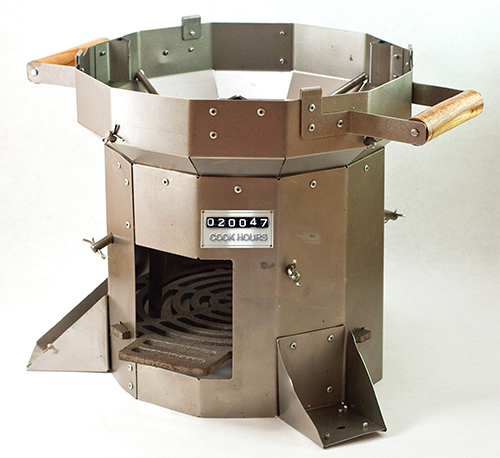The Update: A very big problem with cooking
This month, I’m previewing Geocene’s launch of a sensor and software tool to address one of the world’s biggest problems: cooking. “Cooking?” you ask. “That can’t be a very big problem.” But surprisingly and sadly, cooking kills more people than AIDS, malaria, and tuberculosis combined while also emitting more CO2 than the entire aviation sector. The good news is that this Big Problem has a solution, and we’re going to help. The story starts off scary, but if you make it to the end, I think you’ll be filled with hope and joy to match this holiday season!
- About 3 billion people cook using wood or similar fuels. That means more than a third of the global population cooks their meals on a stove that looks more like a campfire than an efficient kitchen appliance. Like campfires, these stoves use large quantities of wood and emit thick, acrid smoke. It’s the smoke that causes about 3 million deaths per year (usually pneumonia and other cardiovascular diseases), and it’s the copious wood use that contributes all that CO2 (about 1 billion tons of CO2 per year) to the atmosphere.

Ethiopian woman cooking shrio on a traditional three-stone indoor fire. Photo by Danny Wilson.
- There is something that can be done about it! Improved, cleaner cookstoves can replace traditional earthen stoves and three-stone fires. High-quality improved stoves can cook the same amount of food with about half the CO2 and much less smoke. This is a huge win regarding CO2 savings and health protection. But the problem is poor people need help to afford good stoves. A lack of affordability is the major reason why 3 billion people are stuck with bad stoves and that number has remained unchanged since we started tracking this problem in the 1980s.

An example of an improved cookstove that burns pelletized wood fuel.
-
The carbon markets are a promising solution. Carbon markets are interested in offsetting CO2 emitted in one place (usually rich countries/companies) with affordable emission-reducing interventions in another place. Cookstoves are a great candidate for this, and current estimates are that the potential CO2 savings from cookstoves are worth roughly $10 billion per year. For the first time in my life, that has led to real money and energy flowing into the cookstove world. Cookstoves that used to be out of reach for consumers are being subsidized by the carbon markets and making it into people’s homes.
- But there’s another problem: how do you prove that the CO2 emissions have been avoided? Until now, the carbon markets have trusted whatever cookstove projects have claimed about the adoption, use, and impacts of their cookstoves. This system is not robust and has led to ongoing controversy and trust issues about whether improved cookstoves are really being used and having positive impacts. In a system like this, all the incentives are to make low-cost stoves and get them into people’s hands quickly to claim the carbon credits, not to build great stoves and demonstrate real impacts. In fact, a paper currently in preprint estimates that cookstove carbon offsets are oversold by a factor of six.
- As a result, the carbon markets are demanding higher-quality proof. We want to set up a system that incentivizes the creation of high-quality cookstoves that people love to use. Not only that, we will prove that the stoves are being used.
- If you know Geocene well, you know that we launched the company by building sensors to track cookstove adoption. I have been working on monitoring cookstove usage since my Ph.D. research started in 2010. However, back then, we were mainly interested in monitoring adoption for research projects and public health studies. But now, like a sign from the heavens, my old research and Geocene’s original mission align perfectly with the demands of the carbon market. Purchasers of carbon credits want proof of cookstove use, and Geocene’s sensors provide that.
- We will be launching our next product in January 2024. The design and specifications are still Top Secret, but I can tell you that we have code-named it “Stove Odometer.” This new product will be a cost-effective solution to the most significant barrier to disseminating high-quality cookstoves: data-based proof that those stoves are used.

It’s a joke “stove odometer,” but you get the point: cookstove carbon credits that count.
